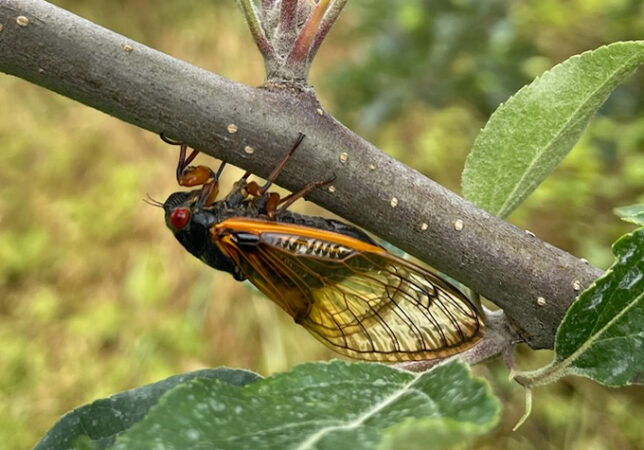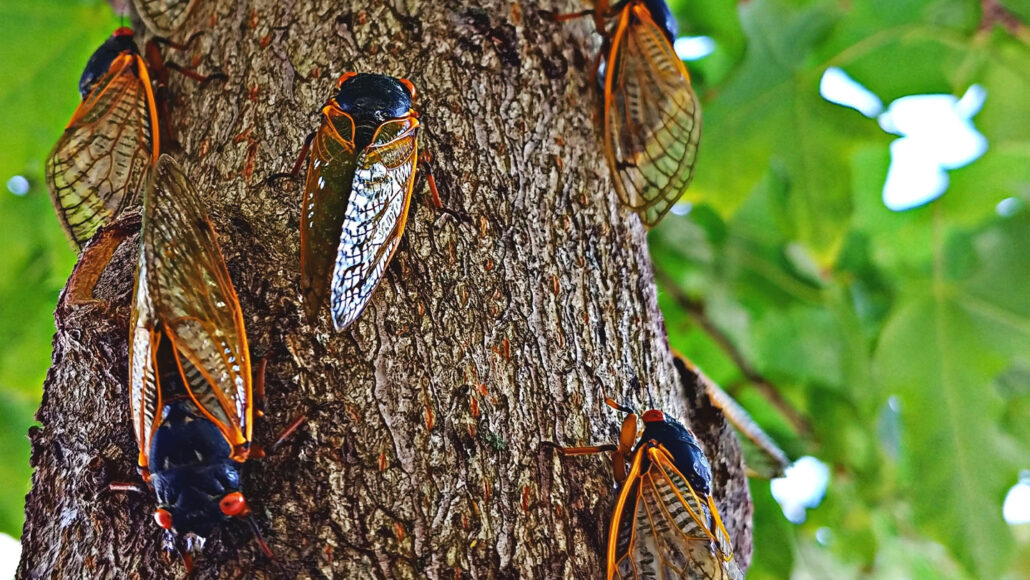There are at least three certainties in life: death, taxes and the periodic emergence of millions of cicadas. But one big cicada uncertainty has finally been put to rest — the question of whether the adult insects eat.
Periodical cicadas (Magicicada spp.) live in various broods across the eastern United States. Every 13 or 17 years, depending on the brood, adult cicadas emerge from the ground en masse and embark on a four-to-six-week saga of mating and laying eggs on young trees before dying. When the baby cicadas hatch, they fall to the ground, burrow into the earth and feed on plant roots until they’re ready for the next emergence. But there’s long been a popularly accepted idea that once adults emerge, they don’t eat.
That perception might stem from cicadas’ lack of obvious chewing mouthparts, like those possessed by very hungry caterpillars, says James Hepler, a research entomologist at the U.S. Arid Land Agricultural Research Center, part of the U.S. Department of Agriculture, in Maricopa, Ariz.
The idea has even been perpetuated in some scientific papers, including one published by a USDA scientist in the 1970s, Hepler says. That’s despite the fact that other scientists had reported seeing cicadas sticking their tubular mouthparts into plant stems, possibly to access sap. “We decided to kind of settle it once and for all,” he says.

While working at the USDA’s Appalachian Fruit Research Station in West Virginia, Hepler and colleagues analyzed the gut contents of 75 periodical cicadas collected from Brood X, which emerged in 2021 (SN: 12/14/21). Since the cicadas were suspected to feed on plant sap, which is mostly water and wouldn’t leave much of a trace in their innards, the team used a highly sensitive technique capable of picking up and decoding minuscule amounts of DNA.
Far from finding empty stomachs, the researchers identified DNA from 22 kinds of plant, including box elder, ash, oak and even cannabis. Given that “the cicadas are ingesting very minute quantities of DNA,” Hepler says, “we were pleasantly surprised that we were able to find DNA in there at all.” The results appear in the Oct. 18 Journal of Insect Science.
“It’s really nice that they actually looked at the gut content,” says Chris Simon, an evolutionary biologist at the University of Connecticut in Storrs who works on cicadas but wasn’t involved in the study. “We see them feeding,” she says, but this is “verification that they’re actually ingesting these particular things.”
Hepler is now interested in the timescale of adult feeding. “Do the cicadas move around from plant to plant on a daily basis, on a weekly basis?” he asks. There’s also the question of what effect this mass sap-sucking has on plants. “An individual cicada seems to have a relatively low impact,” Hepler says. But when hundreds of thousands of them descend on greenery almost at once, the plants face “the potential for pretty significant water loss.”






